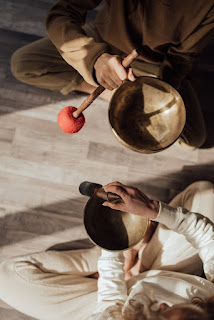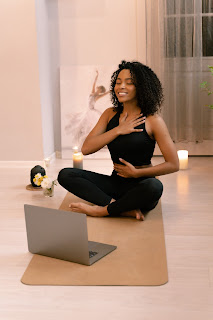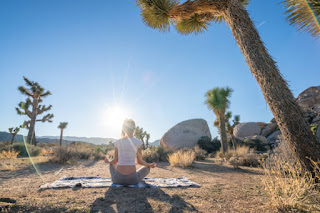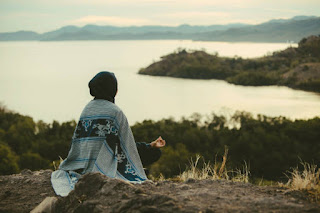The Essentials of Restorative Yoga: Poses, Props, and Practices
Discover the Power of Restorative Yoga: 7 Essential Poses for Deep Relaxation
What Is Restorative Yoga?

Restorative yoga is a unique and deeply calming practice that emphasizes relaxation and rejuvenation of the body, mind, and spirit. Unlike more dynamic styles of yoga, restorative yoga uses gentle poses held for extended periods, often with the support of various props. This article will introduce you to the transformative power of restorative yoga and guide you through 7 essential poses for deep relaxation.
Definition and Benefits
Restorative yoga is a style of yoga that emphasizes relaxation, restoration, and rejuvenation of the body, mind, and spirit. This practice involves gentle poses held for extended periods, often supported by props such as bolsters, blankets, and blocks to facilitate deep relaxation. The focus is on passive stretching, calming the nervous system, and fostering a meditative state of mind.
The benefits of restorative yoga are numerous, including regulation of the nervous system, reduction of stress, and alleviation of symptoms of anxiety and depression. I find restorative yoga to be one of the most effective practices for relaxation and stress reduction. When recovering from a physical injury or returning to yoga after a prolonged break, I discovered that it allowed me to engage in physical movement adaptively, providing a soothing experience for my mind when more active forms of yoga were not possible.
Who Benefits from Restorative Yoga?
Restorative yoga provides a sanctuary for those ensnared by the pressures of daily life. It offers a gentle embrace to individuals grappling with chronic stress, creating a haven of deep relaxation where the burdens of a hectic existence can be momentarily set aside. Each gentle pose invites the release of tension and the cultivation of calmness in both the body and mind.
For those navigating the stormy waters of anxiety or depression, restorative yoga acts as a soothing balm. The practice fosters a serene environment that encourages a profound sense of peace and well-being. Quiet moments spent in supported postures help to calm the mind and bring solace to an anxious heart. Restorative yoga emphasizes deep mental and physical relaxation, melting away muscle tension and alleviating stress. Personally, I find restorative yoga to be an incredible way to connect with my feminine side during times of stress and uncertainty. Tapping into this aspect has been an amazing tool for coping and continuing to move forward.
“Within you, there is a stillness and a sanctuary to which you can retreat at any time and be yourself.” – Hermann Hesse
Individuals recovering from illness or injury find restorative yoga to be a compassionate companion on their journey to healing. The gentle, supportive poses are designed to nurture the body without imposing strain, facilitating a healing process that is both kind and effective. It offers a path to recovery that respects the body’s need for tenderness and care.
Physical exhaustion, a common plight in today’s fast-paced world, meets its match in restorative yoga. This practice replenishes depleted energy reserves, inviting practitioners to rest and rejuvenate. It is a space where the weary can find respite, restoring vitality through deep, restorative rest.
Finally, for those seeking a meditative practice that marries physical stillness with mental tranquility, restorative yoga is a perfect fit. It provides a contemplative pause, a chance to turn inward and connect with a quieter, more centered self. The prolonged holds in each pose offer a meditative retreat, fostering a deeper connection to one’s inner world.
Differences from Regular Yoga
Restorative yoga stands apart from more active styles of yoga through its unique approach to pace and intensity. While traditional yoga often involves a dynamic flow of postures aimed at building strength and flexibility, restorative yoga invites a slower, more passive journey. Here, stillness and relaxation take center stage, guiding practitioners into a state of deep tranquility.
In restorative yoga, props become essential companions. Bolsters, blankets, and yoga blocks are employed generously to support the body in various poses. Personally, I find that using my favorite fuzzy and cozy blankets adds an extra layer of comfort, transforming each pose into a nurturing embrace. This support allows practitioners to surrender completely into each posture, relieving the body of any effort and facilitating profound relaxation. The presence of these props creates a gentle cradling sensation, perfect for releasing tension.
Another distinctive feature of restorative yoga is the duration of each pose. Unlike the brief holds in more vigorous yoga styles, restorative postures are sustained for much longer periods, often ranging from five to twenty minutes. This extended time in each pose encourages a deeper release of tension and fosters a more meditative state of mind. For me, lighting candles, setting up cozy lighting, and playing calming music enhances this experience, helping my body and mind sink into a state of serene stillness. I also make sure my dogs are in another room to minimize distractions, allowing me to fully immerse myself in the practice.
The focus of restorative yoga also diverges from traditional yoga. While conventional practices often emphasize physical fitness, alignment, and coordinated breath, restorative yoga centers on calming the nervous system and promoting deep relaxation. It’s a practice that prioritizes inner peace over physical exertion, offering a sanctuary where the mind can rest and the spirit can rejuvenate. This approach has been instrumental in managing my scoliosis; using a foam neck wedge and combining exercises with chiropractic care has significantly alleviated my discomfort.
For more on how props can enhance your restorative yoga practice, check out these links:
- The Essential Props for Restorative Yoga
- How to Create a Peaceful Yoga Space at Home
- The Benefits of Using Yoga Props
- Combining Yoga with Chiropractic Care for Scoliosis
- Music Playlists for a Calming Yoga Practice
Restorative yoga is a beautiful practice that invites you to slow down, breathe deeply, and find peace in stillness. Whether you are seeking to alleviate stress, manage physical conditions, or simply take a break from the busyness of life, this gentle form of yoga offers a sanctuary for healing and relaxation.
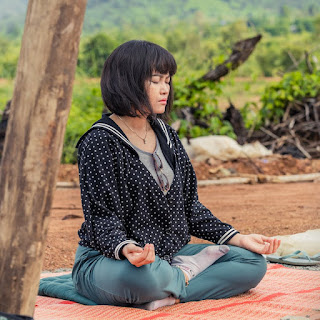
Effects on the Nervous System
Restorative yoga has a profound impact on the nervous system, particularly through its activation of the parasympathetic nervous system (PNS), which is responsible for the body’s “rest and digest” functions. Here’s how it affects the nervous system:
Reduces Stress Hormones:
By promoting relaxation, restorative yoga helps reduce the levels of stress hormones like cortisol and adrenaline, which can be elevated in response to chronic stress. Studies have shown that practices which activate the PNS can significantly lower these hormone levels, contributing to a sense of calm and well-being. Learn more about the effects of yoga on stress hormones.
Calms the Mind:
The meditative aspect of holding poses for long periods encourages mental stillness and clarity, reducing mental chatter and anxiety. Research indicates that mindfulness practices, such as those incorporated in restorative yoga, can decrease symptoms of anxiety and depression by promoting a state of mental peace. Explore the benefits of mindfulness in yoga.
Improves Heart Rate Variability (HRV):Promotes Deep Breathing:
Higher HRV is associated with better stress resilience. Restorative yoga enhances HRV, indicating a balanced and responsive autonomic nervous system. Scientific studies have demonstrated that regular practice of restorative yoga can improve HRV, thereby enhancing the body’s ability to handle stress. Read about the connection between HRV and yoga.
Promotes Deep Breathing:
The slow, mindful breathing encouraged in restorative yoga stimulates the vagus nerve, which helps to shift the body into a state of relaxation and repair. Activation of the vagus nerve through deep breathing has been linked to a host of health benefits, including reduced inflammation and improved emotional regulation. Discover the science behind deep breathing and the vagus nerve.
Enhances Sleep Quality:
By calming the nervous system and reducing physical tension, restorative yoga can improve sleep patterns, making it an excellent practice for those with insomnia or restless sleep. Studies have found that yoga practices can lead to significant improvements in sleep quality and duration. Learn how yoga can improve sleep.
Integrating these scientific findings into your restorative yoga practice not only enhances your understanding but also reinforces the tangible benefits of this gentle yet powerful form of yoga.
Restorative yoga offers a sanctuary for healing and relaxation, making it an ideal practice for anyone seeking to alleviate stress, manage physical conditions, or simply find a moment of peace amidst the busyness of life.
Best Time to Practice Restorative Yoga
Restorative yoga, with its gentle pace and emphasis on deep relaxation, finds its perfect home in the quiet hours of the evening or just before bed. This timing aligns seamlessly with the practice’s calming nature, making it an ideal prelude to a restful night’s sleep.
As the day winds down, restorative yoga prepares the body for slumber by soothing the nervous system. The tranquil poses help transition the body from the hustle and bustle of daily activities to a state of restful ease, creating a bridge to the serene stillness required for sleep.
Engaging in restorative yoga in the evening provides a much-needed release from the physical and mental tension accumulated throughout the day. The gentle stretches and supported postures allow both body and mind to shed the weight of daily stress, fostering a peaceful, uninterrupted rest.
Moreover, this evening ritual promotes mindful relaxation. Each session becomes a sacred opportunity to unwind mindfully, signaling to the body that it is time to relax and prepare for sleep. This practice cultivates a sense of tranquility that lingers, gently guiding the practitioner into a state of deep, restorative rest.
Restorative yoga’s accessible and supportive approach makes it suitable for individuals of all fitness levels. It can be a valuable addition to anyone’s wellness routine, offering a sanctuary of calm and a powerful antidote to the stresses of modern life. By integrating restorative yoga into the evening hours, one can find a profound sense of peace and improved overall well-being, making each night a restful retreat from the demands of the day.
Benefits of Restorative Yoga
Improving Deep Relaxation and Reducing Stress
Restorative yoga offers numerous benefits for enhancing deep relaxation and reducing stress. This gentle form of yoga is designed to help regulate the nervous system, reduce cortisol levels, and lower blood pressure, making it a powerful tool for stress management and overall well-being.
Regulating the Nervous System: By activating the parasympathetic nervous system (PNS), restorative yoga promotes a state of “rest and digest,” which counteracts the body’s stress response. The slow, deliberate movements and extended holds in each pose encourage the body to shift from the fight-or-flight mode to a more relaxed state. This regulation of the nervous system not only calms the mind but also supports the body’s natural healing processes. Learn more about the nervous system and yoga.
Reducing Cortisol Levels: Cortisol, known as the stress hormone, can wreak havoc on the body when levels remain elevated due to chronic stress. Restorative yoga has been shown to significantly reduce cortisol levels, thereby decreasing the adverse effects of stress on the body. Lower cortisol levels are associated with improved mood, better sleep, and enhanced immune function. Explore the effects of yoga on cortisol.
Lowering Blood Pressure: High blood pressure is a common consequence of prolonged stress. The deep relaxation achieved through restorative yoga can help lower blood pressure by promoting vasodilation and improving cardiovascular health. This makes restorative yoga an excellent practice for individuals with hypertension or those looking to maintain healthy blood pressure levels. Discover the link between yoga and blood pressure.
Alleviating Symptoms of Anxiety and Depression: The calming nature of restorative yoga can be particularly beneficial for those experiencing anxiety and depression. The meditative aspects of holding poses for extended periods encourage mental stillness and clarity, reducing mental chatter and fostering a sense of peace. Research has demonstrated that yoga practices, including restorative yoga, can significantly alleviate symptoms of anxiety and depression. Read about yoga’s impact on mental health.
Easing Chronic Pain: Chronic pain sufferers often find relief through restorative yoga. The gentle, supportive poses help to release muscle tension and improve circulation without imposing strain on the body. This can be especially beneficial for individuals with conditions such as fibromyalgia, arthritis, or back pain. Learn how yoga helps with chronic pain.
Creating Space and Alleviating Stress: Restorative yoga focuses on deep mental and physical relaxation, melting away muscle tension and creating space in the body. By holding poses for longer periods, practitioners can experience a profound sense of release and relief. This practice is an excellent way to combat the daily stresses of life and find a moment of tranquility. Explore techniques for deep relaxation in yoga.
Integrating restorative yoga into your routine can provide a sanctuary of calm amidst the chaos of everyday life. Whether you are dealing with high levels of stress, managing a chronic condition, or simply seeking a way to unwind, restorative yoga offers a gentle yet powerful path to deep relaxation and stress relief.
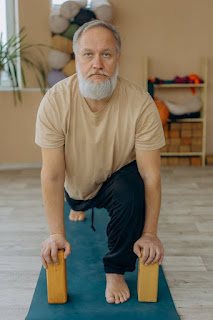
Essential Restorative Yoga Props
Using Props for Support and Comfort in Restorative Yoga Classes
Props are a cornerstone of restorative yoga, providing the necessary support and comfort to fully experience the restorative benefits of the practice. These tools transform the practice into a deeply nurturing and relaxing experience, making it accessible to practitioners of all levels. A restorative yoga class creates a calming environment with the use of props, soothing music, and gentle movements to induce deep relaxation and release stress.
Using Props for Support and Comfort in Restorative Yoga Classes
Props are essential in restorative yoga because they help create a comfortable and supportive environment that allows the body to relax deeply into each pose. When properly used, these props can facilitate a deeper state of relaxation, enabling the body to release tension and stress more effectively.
Common Props and Their Uses
Blocks:
- How to Use: Blocks are versatile and can be used to support various parts of the body. For example, they can be placed under the hips in seated poses to elevate the pelvis and promote better alignment. Blocks can also support the head or back in reclining poses.
- Benefits: They help maintain proper alignment, reduce strain, and enhance stability in poses.
Bolsters:
- How to Use: Bolsters are often used under the back, knees, or neck in reclining poses to provide firm support. They can also be placed lengthwise along the spine to open the chest and enhance deep breathing.
- Benefits: They offer substantial support, making it easier to relax fully into the pose and release muscular tension.
Blankets:
- How to Use: Blankets can be folded and used as cushioning under the knees, hips, or head. They are also useful for covering the body to keep warm during extended poses or relaxation.
- Benefits: They provide soft cushioning, making it easier to find comfort in various positions, and help in maintaining body warmth, which is essential for relaxation.
Straps:
- How to Use: Straps can be used to gently stretch the legs, arms, or shoulders without exerting effort. They are particularly useful in poses that require extended reach or flexibility, such as seated forward bends.
- Benefits: They assist in maintaining poses, enhancing flexibility, and preventing overstretching.
Uncommon Props and Their Uses
Sandbags:
- How to Use: Sandbags can be placed on various parts of the body, such as the hips, thighs, or feet, to provide grounding pressure.
- Benefits: The gentle weight of sandbags helps deepen relaxation, release tension, and enhance the feeling of being grounded?
Eye Pillows:
- How to Use: Eye pillows can be placed over the eyes during relaxation or meditation to block out light and provide gentle pressure.
- Benefits: They promote a sense of calm, help in reducing eye strain, and encourage deeper relaxation.
Chairs:
- How to Use: Chairs can be used in various poses to provide additional support, especially for those with limited mobility. They can support seated forward bends, supported backbends, or reclining poses.
- Benefits: Chairs offer stability and support, making it easier to maintain poses without strain.
Enhancing Your Restorative Yoga Practice with Props
When your body feels supported by these props, you can relax more deeply into each pose. This deep relaxation is crucial for recharging both the body and the nervous system. The proper use of props allows you to surrender fully into the practice, facilitating a state of rest and rejuvenation that is central to the restorative yoga experience.
By incorporating these common and uncommon props into your restorative yoga practice, you can create a more comfortable, supportive, and effective practice environment. This will help you achieve the full benefits of restorative yoga, promoting relaxation, healing, and overall well-being.
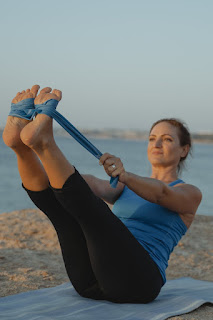
3 Foundational Restorative Yoga Poses
Child’s Pose (Balasana) With Support
- Child’s Pose is a restorative yoga pose that relaxes the low back, gently stretches the knees, and has an overall grounding effect.
- Props needed: Two blankets, one bolster. Optional: Two blocks.
- This pose is great for stress relief and relaxation.
Supported Bridge Pose (Setu Bandha Sarvangasana)
- Supported Bridge Pose is a restorative yoga pose that opens the chest and shoulders, relaxes the upper back, and has an overall energizing effect.
- Props needed: Two blocks. Optional: Bolster, blanket, and eye pillow.
- This pose is great for spinal mobility, glute activation, and opening up the hips and chest.
Reclined Twist (Supta Matsyendrasana) With Support
- Reclined Twist is a restorative yoga pose that gently stretches the entire back, massages the internal organs in the abdomen, and has an overall unwinding and balancing effect.
- Props needed: Two blankets, one bolster. Optional: Eye pillow.
- This pose is great for stress relief and relaxation.
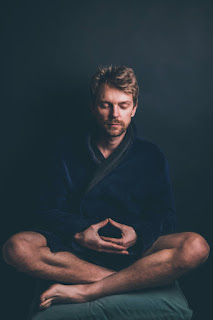
4 Additional Restorative Yoga Poses for Deep Relaxation
Supported Legs-Up-the-Wall Pose (Viparita Karani)
- Supported Legs-Up-the-Wall Pose is a restorative yoga pose that promotes relaxation and reduces stress.
- Props needed: Bolster or blankets.
- This pose is great for stress relief and relaxation.
Supported Corpse Pose (Savasana)
- Supported Corpse Pose is a restorative yoga pose that benefits digestion and calms the sympathetic nervous system.
- Props needed: Bolster under the knees, blanket pulled over you.
- This pose is great for stress relief and relaxation.
Supta Badha Konasana (Reclining Bound Angle Pose)
- Supta Badha Konasana is a restorative yoga pose that relaxes the back, gently stretches the hips and groins, and has an overall grounding effect.
- Props needed: Two blocks, two blankets. Optional: Eye pillow.
- This pose is great for stress relief and relaxation.
Paschimottanasana (Seated Forward Bend)
- Paschimottanasana is a restorative yoga pose that relaxes the mid-back, stretches the low back and hamstrings, and has an overall meditative effect.
- Props needed: One blanket, one or two blocks.
- This pose is great for stress relief and relaxation.

